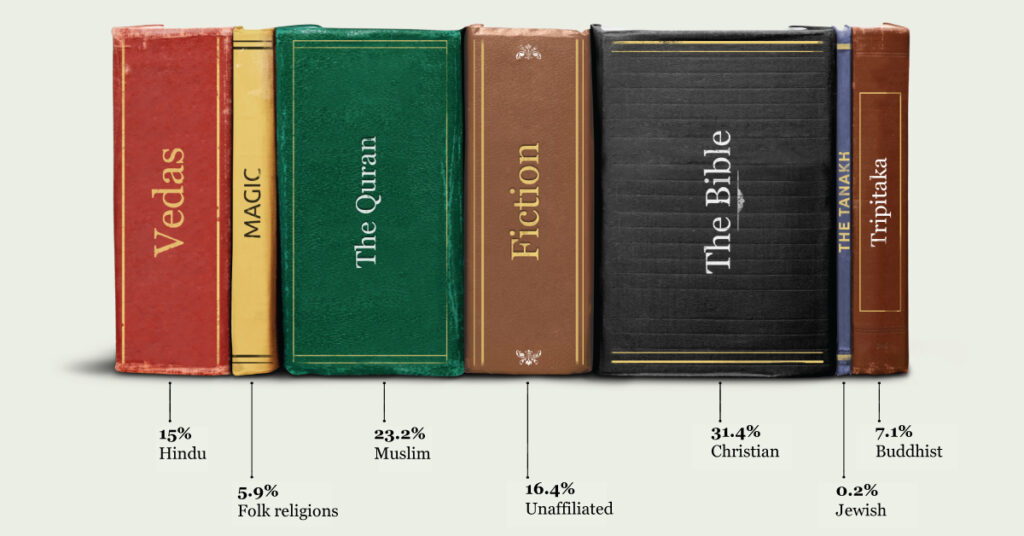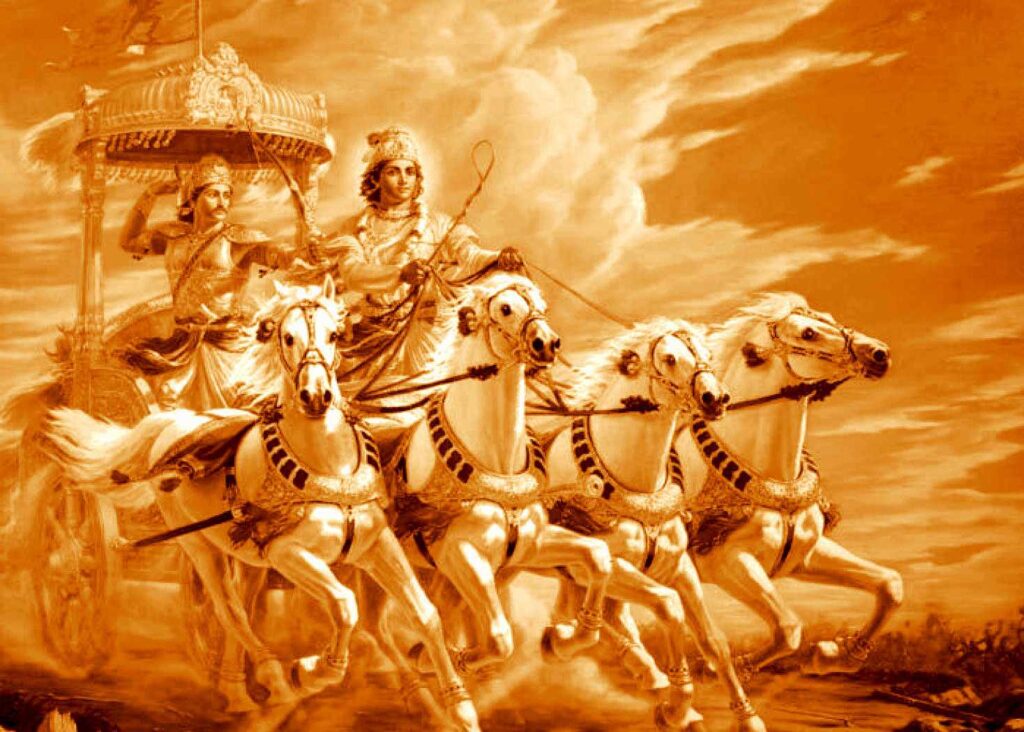
Religious Texts: A Comprehensive Exploration
Introduction
Religious texts are sacred writings revered within various faith traditions as divine revelations, authoritative teachings, or spiritual guides. These texts are foundational to religious belief systems, serving as sources of doctrine, moral guidance, rituals, and cultural identity. Across different religions, these texts are viewed as the word of God, wisdom from enlightened beings, or the accumulated teachings of revered prophets and sages. Their importance extends beyond religious practice, influencing law, ethics, literature, and societal norms. The study of religious texts offers profound insights into human spirituality, ethics, and the quest for meaning.
Historical Background
The history of religious texts is deeply intertwined with the evolution of human civilizations. Early societies recognized the need to preserve their spiritual traditions, often through oral transmission before the advent of writing systems. As writing developed, religious teachings were recorded on various materials, such as clay tablets, papyrus, and parchment. Ancient civilizations like Mesopotamia, Egypt, India, and China played crucial roles in the preservation and transmission of these texts.
Mesopotamia and Egypt: The Epic of Gilgamesh and the Pyramid Texts, among the earliest known religious writings, were inscribed on clay tablets and tomb walls, reflecting the spiritual and mythological beliefs of their time.
India: The Vedas, among the oldest sacred texts in Hinduism, were orally transmitted for centuries before being written down. This oral tradition underscores the importance of memorization and recitation in preserving religious teachings.
China: Confucian and Taoist texts were inscribed on bamboo strips and silk, ensuring their transmission across generations and their role in shaping Chinese philosophy and governance.
As these civilizations evolved, so did their methods of preserving religious texts, leading to the development of sophisticated scribal traditions, libraries, and schools dedicated to the study and interpretation of sacred writings.
A to Z Breakdown of Key Religious Texts and Concepts
A – Avesta
The Avesta is the primary collection of religious texts of Zoroastrianism, one of the world’s oldest monotheistic religions. It includes hymns, prayers, and rituals attributed to Zoroaster (Zarathustra), the founding prophet of Zoroastrianism. The Avesta is divided into several parts, including the Gathas, which are considered Zoroaster’s direct teachings, and the Yasna, which contains liturgical texts used in worship.
Historical Context: The Avesta was preserved through a combination of oral tradition and later written manuscripts. The Sassanian Empire (224–651 CE) played a crucial role in compiling these texts. The Islamic conquest of Persia in the 7th century significantly impacted Zoroastrianism, leading to the loss of many texts, but the Avesta remained central to the faith.
Significance: The Avesta provides insight into Zoroastrian beliefs about duality, the cosmic struggle between good and evil, and the importance of maintaining spiritual purity. It has influenced other religious traditions and remains a key text for understanding ancient Iranian culture and religion.
B – Bible
The Bible is the sacred scripture of Christianity, comprising the Old Testament and the New Testament. The Old Testament, shared with Judaism, includes books such as Genesis, Exodus, and Psalms, which recount the creation of the world, the history of the Israelites, and their covenant with God. The New Testament, specific to Christianity, includes the Gospels, which narrate the life and teachings of Jesus Christ, as well as the Acts of the Apostles, Epistles, and Revelation.
Historical Context: The Bible was written over many centuries, with the Old Testament composed between the 12th and 2nd centuries BCE and the New Testament between the 1st and 2nd centuries CE. The process of canonization, which determined the books included in the Bible, was influenced by early Christian councils and theological debates.
Significance: The Bible is foundational to Christian faith and practice, offering teachings about God, salvation, and ethical living. It has profoundly influenced Western civilization’s ethics, laws, literature, and art. The Bible’s impact is also evident in the formation of Christian doctrines and the diversity of Christian denominations.
C – Quran
The Quran is the holy book of Islam, believed by Muslims to be the literal word of God as revealed to the Prophet Muhammad by the angel Gabriel. It is written in Arabic and consists of 114 surahs (chapters) that cover various aspects of life, including theology, law, and morality.
Historical Context: The Quran was revealed over a period of 23 years, beginning in 610 CE in the Arabian Peninsula. Initially transmitted orally, it was compiled into a written form shortly after the Prophet’s death under the Caliphate of Uthman ibn Affan (644–656 CE).
Significance: The Quran is the ultimate source of guidance for Muslims, influencing all aspects of life, from personal conduct to legal systems. Its teachings emphasize monotheism, justice, mercy, and the importance of community. The Quran’s influence extends beyond religion, impacting Islamic art, literature, and culture.
D – Dhammapada
The Dhammapada is one of the most widely read and respected texts in Theravada Buddhism. It is a collection of sayings of the Buddha in verse form, covering various aspects of ethical conduct, mental training, and wisdom. The Dhammapada is part of the Khuddaka Nikaya, which is itself a section of the Pali Canon (Tipitaka).
Historical Context: The Dhammapada was compiled in the 3rd century BCE and reflects the teachings of the historical Buddha, Siddhartha Gautama, who lived in the 6th century BCE. It has been preserved in the Pali language, which is closely related to the language spoken by the Buddha.
Significance: The Dhammapada is highly regarded for its practical teachings on ethics and mental discipline. Its verses are often memorized and recited by Buddhists and have influenced Buddhist practice and philosophy across Asia. The text’s emphasis on mindfulness, compassion, and the impermanence of life continues to resonate with practitioners and scholars alike.
E – Epic of Gilgamesh
The Epic of Gilgamesh is one of the earliest known works of literature, originating from ancient Mesopotamia. It narrates the adventures of Gilgamesh, a Sumerian king, and his quest for immortality. The epic explores themes of friendship, mortality, and the human condition.
Historical Context: The epic was composed in the 18th century BCE and preserved on clay tablets written in cuneiform script. It reflects the religious and cultural beliefs of ancient Mesopotamian societies, particularly their views on the gods, the afterlife, and the role of kingship.
Significance: The Epic of Gilgamesh provides valuable insights into early human concerns about death, friendship, and the search for meaning. It has influenced subsequent literature and religious thought, including later epic traditions in the ancient world. The epic’s exploration of the human experience continues to be relevant in contemporary discussions of literature and philosophy.
F – Five Classics
The Five Classics are a collection of ancient Chinese texts that form the foundation of Confucianism. They include the Book of Songs, the Book of Documents, the Book of Rites, the Book of Changes, and the Spring and Autumn Annals. These texts cover various aspects of Chinese philosophy, history, and governance.
Historical Context: The Five Classics were compiled and commented upon during the early Zhou Dynasty (1046–256 BCE) and were later canonized by Confucian scholars. They have been central to Chinese education and government for over two millennia, shaping the intellectual and moral framework of Chinese society.
Significance: The Five Classics provide a basis for Confucian thought, emphasizing the importance of ritual, moral conduct, and social harmony. They have influenced Chinese culture, governance, and social norms throughout history and continue to be studied and revered in East Asian societies.
G – Guru Granth Sahib
The Guru Granth Sahib is the central religious scripture of Sikhism, compiled by Guru Arjan Dev and later expanded by Guru Gobind Singh, the tenth and final human Guru. It consists of hymns and writings by Sikh Gurus and other saints from various backgrounds, reflecting the universal message of Sikhism.
Historical Context: The Guru Granth Sahib was completed in the early 17th century CE and was declared the eternal Guru by Guru Gobind Singh, making it the living spiritual authority for Sikhs. The text is written in Gurmukhi script and includes verses in various languages, including Punjabi, Persian, and Sanskrit.
Significance: The Guru Granth Sahib emphasizes devotion to one God, equality, social justice, and the rejection of caste distinctions. It plays a central role in Sikh worship, where it is recited, sung, and revered. The Guru Granth Sahib’s teachings continue to inspire and guide the Sikh community worldwide.
H – Hadith
The Hadith are collections of sayings, actions, and approvals of the Prophet Muhammad. They serve as a significant source of guidance for Muslims, complementing the Quran by providing detailed examples of how to live according to Islamic principles.
Historical Context: The Hadith were compiled in the 8th and 9th centuries CE by scholars such as Bukhari, Muslim, and others. The authenticity of each Hadith was carefully scrutinized, leading to the classification of Hadiths into different categories based on their reliability.
Significance: The Hadith are essential for understanding the Quran and Islamic law (Sharia). They provide practical examples of the Prophet’s life, influencing Islamic jurisprudence, ethics, and daily practices. The interpretation and application of Hadith have led to the development of various Islamic schools of thought.
I – I Ching
The I Ching, or **Yijing
** (Book of Changes), is an ancient Chinese divination text and one of the oldest of the Chinese classics. It is used as an oracle to guide decision-making and has also been interpreted as a philosophical work on change and the nature of reality.
Historical Context: The I Ching dates back to the Western Zhou period (1046–771 BCE) and has been attributed to the legendary figures Fu Xi, King Wen, and Confucius. Over time, it became a central text in Confucianism, Daoism, and Chinese culture.
Significance: The I Ching is used in both religious and philosophical contexts, offering insights into the dynamics of change and the interplay of opposites (Yin and Yang). It has influenced Chinese thought, literature, and even modern Western psychology and philosophy.
J – Jain Agamas
The Jain Agamas are the canonical scriptures of Jainism, believed to contain the teachings of Lord Mahavira, the 24th Tirthankara. They are divided into two main branches: the Svetambara Agamas and the Digambara texts, reflecting the two main sects of Jainism.
Historical Context: The Jain Agamas were compiled between the 4th century BCE and 5th century CE. The Svetambaras believe that the Agamas were transmitted orally and eventually written down, while the Digambaras believe the original Agamas were lost and later texts were compiled based on oral traditions.
Significance: The Jain Agamas provide guidance on ethical living, non-violence (ahimsa), and the path to spiritual liberation. They are central to Jain philosophy and rituals, influencing the daily lives of Jains and the broader Indian philosophical landscape.
K – Kojiki
The Kojiki (Record of Ancient Matters) is one of Japan’s oldest and most important religious texts, containing the mythology and history of Japan from its creation to the 7th century CE. It is a key text in Shintoism, the indigenous religion of Japan.
Historical Context: The Kojiki was compiled in 712 CE by the court scholar Ō no Yasumaro at the request of Empress Genmei. It was written in a mixture of classical Chinese and phonetic Japanese, reflecting the linguistic transition of the time.
Significance: The Kojiki provides the foundational myths of Shinto, including the creation of Japan by the gods Izanagi and Izanami and the descent of the imperial family from the sun goddess Amaterasu. It has shaped Japanese culture, national identity, and religious practices, influencing both Shinto and Japanese literature.
L – Lotus Sutra
The Lotus Sutra is one of the most revered texts in Mahayana Buddhism. It teaches the universality of Buddha-nature and the possibility of all beings attaining Buddhahood. The sutra is known for its parables and emphasis on compassion and skillful means (upaya).
Historical Context: The Lotus Sutra was likely composed in India between the 1st and 2nd centuries CE and was later translated into Chinese, becoming highly influential in East Asian Buddhism. It has been a central text in schools such as Tiantai, Tendai, and Nichiren Buddhism.
Significance: The Lotus Sutra is celebrated for its profound teachings on the nature of enlightenment and the inclusivity of all beings in the path to Buddhahood. Its themes of compassion and the eternal presence of the Buddha have inspired countless followers and have had a lasting impact on Buddhist thought and practice.
M – Mahabharata
The Mahabharata is one of the two major Sanskrit epics of ancient India, the other being the Ramayana. It is a vast narrative that includes the Bhagavad Gita, a key philosophical and spiritual text. The Mahabharata tells the story of the Kurukshetra War and explores themes of duty, righteousness, and the complexities of human relationships.
Historical Context: The Mahabharata was composed between 400 BCE and 400 CE and has been attributed to the sage Vyasa. It was transmitted orally before being written down, and its vast scope encompasses mythology, history, and philosophy.
Significance: The Mahabharata is a cornerstone of Hindu literature, offering moral and spiritual lessons through its complex characters and narratives. The Bhagavad Gita, a dialogue between Prince Arjuna and the god Krishna, has been particularly influential in Hindu philosophy and ethics.
N – New Testament
The New Testament is the second part of the Christian Bible, focusing on the life, teachings, death, and resurrection of Jesus Christ. It includes the Gospels, the Acts of the Apostles, the Epistles, and the Book of Revelation.
Historical Context: The New Testament was written between the 1st and 2nd centuries CE by various authors, including apostles and early Christian leaders. The texts were canonized by early Christian councils, which determined the official books included in the New Testament.
Significance: The New Testament is central to Christian faith, providing the foundation for Christian beliefs about salvation, the nature of Christ, and the Church. It has shaped Christian theology, worship, and practice, as well as Western art, literature, and culture.
O – Oracle Bones
Oracle Bones are ancient Chinese artifacts used for divination during the Shang Dynasty (c. 1600–1046 BCE). These bones, often from oxen or turtles, were inscribed with questions to the gods or ancestors and then heated until they cracked. The patterns of the cracks were interpreted as answers.
Historical Context: Oracle bones are some of the earliest evidence of Chinese writing and were primarily used by kings to make important decisions about warfare, agriculture, and other state affairs. The inscriptions on oracle bones provide valuable insights into early Chinese religion, society, and governance.
Significance: Oracle bones are crucial for understanding the origins of Chinese script and the religious practices of the Shang Dynasty. They represent the early stages of Chinese writing and are key artifacts in the study of ancient Chinese history.
P – Psalms
The Psalms are a book in the Bible, consisting of religious songs, prayers, and poems traditionally attributed to King David. They are part of the Old Testament and are central to Jewish and Christian worship.
Historical Context: The Psalms were composed over several centuries, with some dating back to the 10th century BCE. They reflect a wide range of emotions, from praise and thanksgiving to lament and supplication, and have been used in worship, personal prayer, and communal rituals.
Significance: The Psalms are cherished for their poetic expression of faith and human experience. They have been integral to Jewish and Christian liturgy, inspiring countless hymns, prayers, and works of art. The Psalms continue to be a source of comfort and inspiration for believers around the world.
Q – Quran (See C for Quran)
The Quran was covered under C for Quran.
R – Rigveda
The Rigveda is one of the oldest sacred texts in Hinduism, composed of hymns dedicated to various deities. It is part of the four Vedas, the foundational texts of Hinduism.
Historical Context: The Rigveda was composed between 1500 and 1200 BCE and was orally transmitted before being written down in ancient India. It represents the earliest phase of Vedic religion, focusing on rituals, cosmology, and the worship of natural forces.
Significance: The Rigveda is central to Vedic rituals and philosophy, providing insights into early Hindu beliefs and cosmology. Its hymns are still recited in Hindu rituals and have influenced the development of later Hindu scriptures and traditions.
S – Septuagint
The Septuagint is the Greek translation of the Hebrew Bible, completed by Jewish scholars in the 3rd century BCE. It was widely used in the Hellenistic world and early Christianity.
Historical Context: The translation was commissioned by the Ptolemaic rulers of Egypt and became the standard version of the Old Testament in Greek-speaking regions. The Septuagint played a significant role in the spread of Judaism and the development of Christian theology, as it was the version of the Hebrew Bible most commonly used by early Christians.
Significance: The Septuagint was instrumental in spreading Jewish scripture in the ancient world and influenced the development of early Christian theology. It remains an important text in Eastern Orthodox Christianity and is studied for its insights into ancient Jewish and Christian traditions.
T – Torah
The Torah is the central reference of the religious Judaic tradition. It includes the first five books of the Hebrew Bible, also known as the Pentateuch: Genesis, Exodus, Leviticus, Numbers, and Deuteronomy.
Historical Context: The Torah was traditionally believed to have been given to Moses by God. It was written down over centuries and canonized around the 5th century BCE. The Torah has been central to Jewish religious life, serving as the foundation of Jewish law, ethics, and worship.
Significance: The Torah is foundational to Jewish identity and practice, providing the basis for Jewish law (Halakha), religious observance, and ethical teachings. It has also influenced Christianity and Islam, which regard it as a sacred text. The Torah’s teachings continue to guide Jewish life and thought, shaping rituals, holidays, and community values.
U – Upanishads
The Upanishads are a collection of philosophical texts that explore the spiritual concepts of Hinduism, such as Brahman (ultimate reality) and Atman (soul). They form the concluding part of the Vedas and are considered the essence of Vedic thought.
Historical Context: The Upanishads were composed between 800 and 200 BCE and represent a shift from the ritualistic focus of the earlier Vedas to a more introspective and philosophical approach. They have been highly influential in shaping Hindu philosophy, particularly the concepts of karma, rebirth, and liberation
(moksha).
Significance: The Upanishads are revered for their profound insights into the nature of existence and the self. They have inspired various schools of Hindu philosophy, including Vedanta, and continue to be studied for their spiritual and philosophical depth. The Upanishads have also influenced global philosophical thought, particularly through their exploration of metaphysical concepts.
V – Vedas
The Vedas are the oldest and most authoritative scriptures of Hinduism, consisting of four collections: Rigveda, Samaveda, Yajurveda, and Atharvaveda. They contain hymns, prayers, rituals, and philosophical teachings that form the foundation of Hindu religious practice.
Historical Context: The Vedas were composed between 1500 and 500 BCE in ancient India and were orally transmitted for centuries before being written down. They reflect the religious practices and beliefs of the early Indo-Aryans and have been central to Hindu worship and philosophy.
Significance: The Vedas are considered the eternal and divine revelation in Hinduism, forming the basis for rituals, ceremonies, and philosophical inquiry. They have influenced the development of Hindu law, ethics, and social structure. The Vedas continue to be recited and studied in Hindu rituals and education.
W – Wisdom Literature
Wisdom Literature refers to a genre of ancient texts that provide moral and philosophical guidance, often in the form of proverbs, maxims, and reflections on life. These texts are found in various religious traditions, including the Hebrew Bible (e.g., Proverbs, Ecclesiastes), the Egyptian Instruction Texts, and the Mesopotamian Wisdom Literature.
Historical Context: Wisdom literature was composed over millennia, with some of the earliest examples dating back to ancient Mesopotamia and Egypt. These texts were often used in educational settings to instruct young people in ethical behavior and practical wisdom.
Significance: Wisdom literature provides insights into the ethical and philosophical concerns of ancient civilizations. It emphasizes themes such as the pursuit of knowledge, the importance of humility, and the complexities of human existence. These texts have influenced religious and secular thought across cultures and continue to be studied for their timeless wisdom.
X – Xiaojing (Classic of Filial Piety)
The Xiaojing (Classic of Filial Piety) is a Confucian text that emphasizes the importance of filial piety, or respect for one’s parents and ancestors. It is one of the smaller Chinese classics and has played a significant role in Confucian ethics.
Historical Context: The Xiaojing was likely composed during the late Zhou Dynasty (1046–256 BCE) and became an essential part of Confucian education. It was traditionally attributed to Confucius and his disciples, though its exact origins are unclear.
Significance: The Xiaojing has been central to Confucian teaching on family and social harmony. It underscores the importance of filial piety as the foundation of a well-ordered society. The text has influenced Chinese family values, social conduct, and governance, and continues to be revered in Confucian traditions.
Y – Yajurveda
The Yajurveda is one of the four Vedas of Hinduism, primarily concerned with the rituals and sacrificial formulas used in Vedic ceremonies. It is divided into two main recensions: the Shukla (White) Yajurveda and the Krishna (Black) Yajurveda.
Historical Context: The Yajurveda was composed between 1200 and 800 BCE and was used by priests in the performance of sacrifices and other religious rituals. It includes both prose and verse, with instructions for conducting rituals and prayers to various deities.
Significance: The Yajurveda is essential for understanding Vedic rituals and the religious practices of ancient India. It provides insights into the symbolic and practical aspects of Hindu ceremonies and has influenced the development of later Hindu rituals and liturgical practices.
Z – Zend-Avesta (See A for Avesta)
The Zend-Avesta refers to the Avesta and its Zoroastrian commentaries. Covered under A for Avesta.
Delving Deeper into Major Religious Texts
The Bible
The Bible is central to Christianity, with its Old Testament shared with Judaism and its New Testament unique to Christian theology. The Old Testament provides a historical and theological foundation, while the New Testament focuses on the life and teachings of Jesus Christ.
- Origins: The Bible was written over centuries by multiple authors. The Old Testament reflects ancient Israelite religion, while the New Testament was composed in the early Christian period.
- Teachings: The Bible’s teachings cover creation, covenant, salvation, and the moral life. The Sermon on the Mount and the Ten Commandments are central ethical teachings.
- Impact: The Bible has shaped Christian worship, ethics, and theology. Its influence extends to Western law, literature, and culture. Interpretation has led to various Christian denominations, reflecting different theological emphases.
The Quran
The Quran is Islam’s holy book, believed to be the literal word of God revealed to Muhammad. It is central to Islamic belief and practice, guiding every aspect of a Muslim’s life.
- Origins: Revealed over 23 years, the Quran was compiled shortly after Muhammad’s death. Its preservation was a priority, ensuring its authenticity.
- Teachings: The Quran teaches monotheism, the importance of justice, compassion, and the afterlife. It emphasizes the unity of God (Tawhid) and the moral obligations of believers.
- Impact: The Quran shapes Islamic law, theology, and daily life. Its recitation is a central part of Islamic worship. The Quran has influenced Islamic art, culture, and jurisprudence.
The Bhagavad Gita
The Bhagavad Gita is a 700-verse Hindu scripture that is part of the Mahabharata. It is a dialogue between Prince Arjuna and the god Krishna, who serves as his charioteer.
- Origins: Composed around 400 BCE, the Gita synthesizes various aspects of Hindu philosophy, including the paths of devotion (bhakti), action (karma), and knowledge (jnana).
- Teachings: The Gita addresses the moral and philosophical dilemmas of life, emphasizing duty (dharma), righteousness, and devotion to God. It teaches the importance of selfless action and the pursuit of spiritual wisdom.
- Impact: The Bhagavad Gita has had a profound influence on Hindu thought, inspiring leaders like Mahatma Gandhi and shaping modern interpretations of Hinduism. It is considered a guide for living a spiritually meaningful life.
The Torah
The Torah is the foundational text of Judaism, containing the first five books of the Hebrew Bible. It is central to Jewish religious life and law.
- Origins: Traditionally believed to have been given to Moses, the Torah was written over centuries and canonized around the 5th century BCE.
- Teachings: The Torah provides laws, commandments, and teachings that govern Jewish life. It includes narratives of creation, the patriarchs, and the covenant with God.
- Impact: The Torah is central to Jewish worship, education, and ethics. It has influenced Christian and Islamic teachings and continues to guide Jewish communities worldwide.
The Tripitaka
The Tripitaka (Three Baskets) is the traditional term for Buddhist scriptures. It includes the Vinaya Pitaka (monastic rules), Sutta Pitaka (teachings), and Abhidhamma Pitaka (philosophical analysis).
- Origins: The Tripitaka was compiled after the Buddha’s death, around the 3rd century BCE. It was preserved through oral tradition before being written down.
- Teachings: The Tripitaka covers the Buddha’s teachings on ethics, meditation, and wisdom. It provides guidance for monastic and lay practitioners alike.
- Impact: The Tripitaka is the foundational text for Theravada Buddhism and has influenced other Buddhist traditions. Its teachings continue to guide Buddhist practice and philosophy.
Challenges of Translation and Interpretation
Religious texts, being ancient and often written in languages no longer spoken, pose significant challenges for translation and interpretation. Translators must balance faithfulness to the original text with the need to make it accessible to contemporary readers. Different interpretations can lead to varied understandings of the text, influencing religious practice and doctrine.
- Bible: The Bible has been translated into numerous languages, each with its nuances. Different translations reflect theological biases, leading to diverse Christian denominations.
- Quran: The Quran, traditionally read in Arabic, is often accompanied by translations. However, many Muslims believe that the Quran’s full meaning is only captured in its original language.
- Bhagavad Gita: The Gita has been translated and interpreted by many scholars, each emphasizing different aspects of its teachings, leading to various philosophical schools within Hinduism.
Religious Texts as Guides for Rituals and Moral Conduct
Religious texts serve as manuals for rituals, prayers, and moral conduct, shaping the religious life of communities.
- Bible: Provides guidelines for Christian worship, sacraments, and ethical living. The Ten Commandments are a cornerstone of Christian moral teaching.
- Quran: Outlines the Five Pillars of Islam, guiding Muslim worship and community life. Its teachings on charity, fasting, and pilgrimage are central to Islamic practice.
- Torah: Prescribes Jewish rituals, festivals, and dietary laws. The Torah’s commandments govern all aspects of Jewish life, from worship to daily conduct.
Comparison of Key Themes Across Religious Texts
While each religious text has its unique teachings, several themes are common across traditions:
- Monotheism: Emphasized in the Quran, Bible, and Torah, with each text teaching the oneness of God.
- Ethics and Moral Conduct: All religious texts provide guidance on how to live a righteous life. The Bible’s Beatitudes, the Quran’s teachings on justice, and the Gita’s emphasis on duty all reflect this theme.
- Salvation and Liberation: Concepts of salvation (Christianity), liberation (Hinduism, Buddhism), and the afterlife (Islam, Judaism) are central to these texts, though understood differently across traditions.
Societal and Cultural Impact
Religious texts have not only shaped individual beliefs but also influenced societies and cultures.
- Bible: Influenced Western law, art, literature, and politics. The Protestant Reformation, driven by differing interpretations of the Bible, reshaped European society.
- Quran: Guided the development of Islamic civilization, influencing law, science, and art. The Quran’s emphasis on knowledge spurred advancements in various fields.
- Bhagavad Gita: Inspired movements for social and political change in India, including Gandhi’s non-violent resistance.
Preservation and Transmission of Religious Texts
The preservation of religious texts has been a priority for religious communities, ensuring their transmission across generations.
- Bible: The invention of the printing press revolutionized the distribution of the Bible, making it accessible to a broader audience.
- Quran: The Quran has been meticulously preserved through oral and written traditions, with great emphasis on accurate memorization and recitation.
- Vedas: The Vedas were preserved through a rigorous oral tradition, with specific techniques to ensure accurate transmission across generations.
Conclusion
Religious texts are more than just sacred writings; they are living documents that continue to inspire, guide, and challenge believers. Their significance transcends religious boundaries, influencing cultures, societies, and the course of history. The study of these texts offers not only spiritual insights but also a deeper understanding of humanity’s quest for meaning and the divine.



